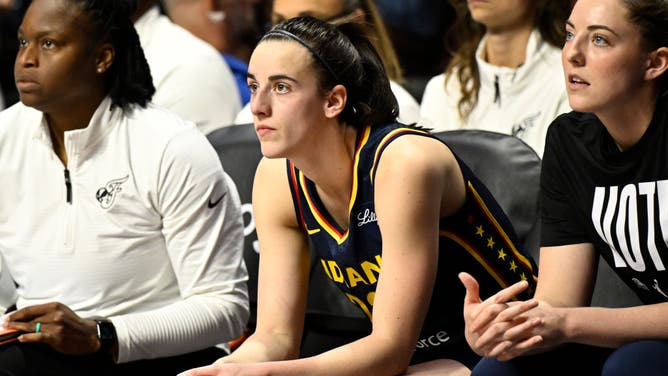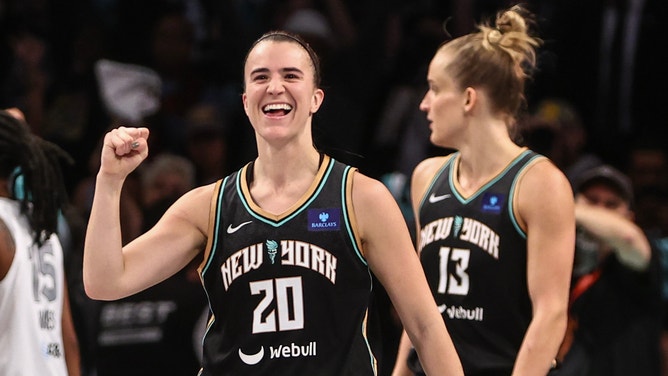We support our Publishers and Content Creators. You can view this story on their website by CLICKING HERE.
One of the big questions facing the WNBA once Caitlin Clark and the Indiana Fever were eliminated from the playoffs was how much TV viewership might sink.
However, the league has to be happy with what it has seen so far in the semifinals.
Of course, ratings are down without Clark. That was always a given. But they are up big over last season. Much of that can be attributed to how many new fans Clark attracted to the WNBA in the first place.

WNBA TV ratings have been strong in the playoffs, even without Caitlin Clark and the Indiana Fever, but they still can’t crack 1 million viewers.
(David Dow/NBAE via Getty Images)
But many people, myself included, expected almost all of those people to stop watching once her season ended. They haven’t, though.
Sunday’s semifinal between the New York Liberty and Las Vegas Aces, a rematch of last year’s WNBA Championship series, drew an average of just under one million viewers.
That’s despite going head-to-head with the NFL.
The Sunday numbers are basically on par with the viewership for every game of both semifinals so far this year, although Lynx-Sun saw a significant decrease from Game 3 on Friday night.
While Clark and the Fever drew nearly double the audience when they played in the first round on a Sunday afternoon at 3 p.m., these are still very good numbers for the league.
In fact, each semifinal game this season between the Liberty and Aces has outdrawn every game of last year’s championship series, even though the same two teams are involved.
The highest-rated finals game last year averaged 890,00 viewers.
These are also the most-viewed WNBA semifinal games in over 20 years, with each game topping the 900K mark.

Sabrina Ionescu and the New York Liberty eliminating the Las Vegas Aces in four games delivered strong TV ratings for the WNBA, even without Caitlin Clark and the Indiana Fever.
(Wendell Cruz/Imagn Images)
However, none of the games without Clark in the playoffs have been able to top the one-million viewer plateau, which became the benchmark for the Indiana Fever.
From Sports Media Watch, regarding Clark’s final game this season:
“It was the 26th WNBA telecast this season to top the million-viewer mark, with Caitlin Clark having played in 22 (21 Fever games and the WNBA All-Star Game)… [and] of the four exceptions, two led out of Clark games.”
The obvious conclusion here continues to be that Caitlin Clark increased overall interest in women’s basketball at all levels.
The same teams that played in last year’s finals are drawing bigger audiences in this year’s semifinals.
The biggest difference between this year and last year is that Clark entered the league this season.
Getting Caitlin Clark in the WNBA was a huge win for the league, and she continues to provide value, even after her historic rookie season came to an end.

 Conservative
Conservative  Search
Search Trending
Trending Current News
Current News 





